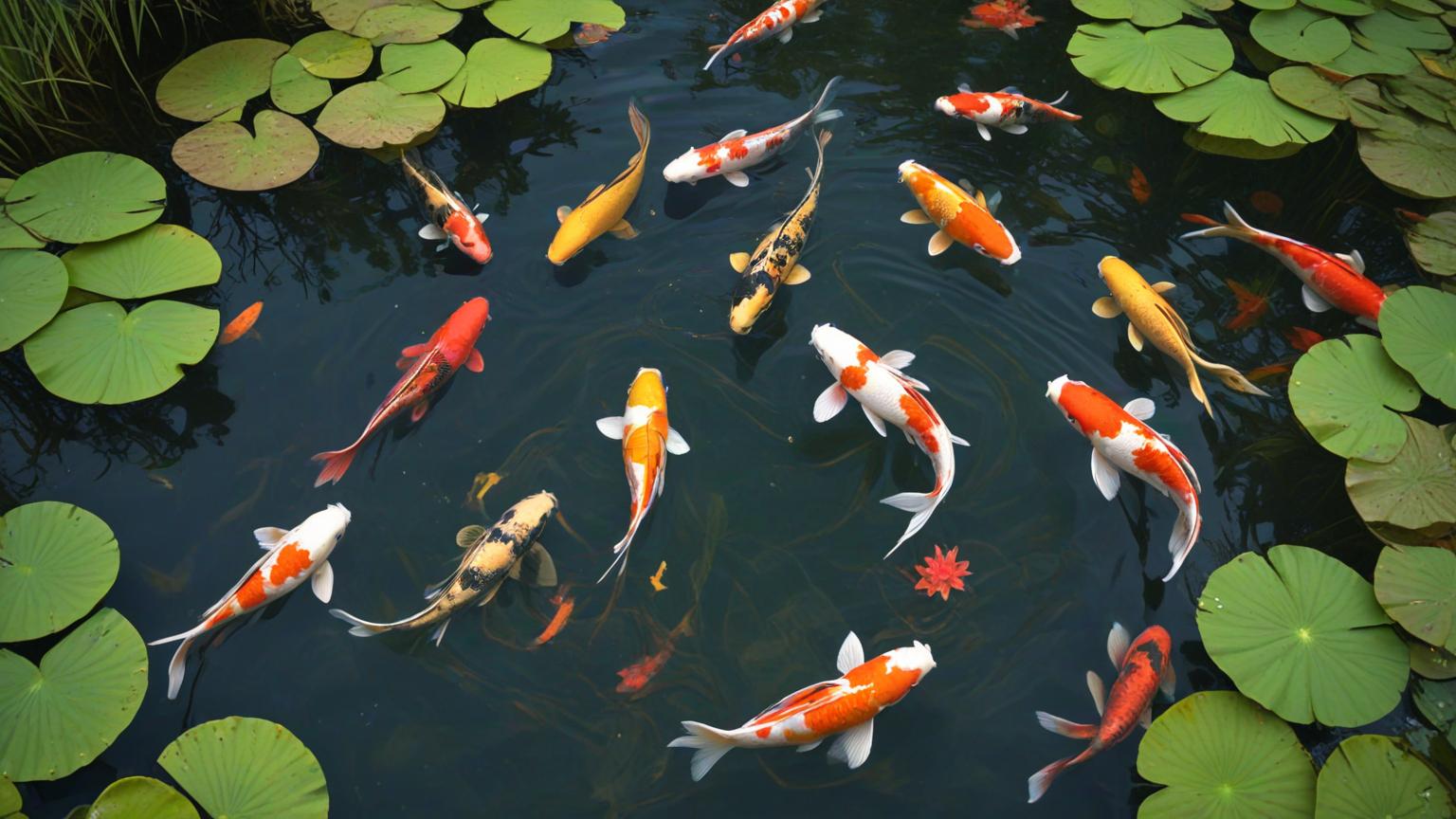When it comes to selecting koi fish, especially for beginners, it can be both exciting and overwhelming. Koi are not just ordinary fish; they are beautiful, long-living creatures that can be a centerpiece in any pond or garden. However, choosing the right koi requires knowledge of certain aspects to ensure that they thrive in your environment. Here are some important guidelines to help you make an informed choice when purchasing koi.
1. Know the Different Types of Koi
Koi come in a variety of colors, patterns, and breeds. Some of the most popular types include Kohaku (white with red patterns), Sanke (white with red and black markings), and Showa (black with red and white patterns). Before choosing your koi, it’s important to decide which variety suits your aesthetic preferences. Additionally, certain varieties can grow larger or require specific care, so make sure you understand the requirements of each type.
2. Size Matters
For beginners, it’s often recommended to start with younger koi, usually around 4-6 inches in length. While smaller koi might be cheaper, they also provide you the opportunity to watch them grow and develop over time. However, it’s also essential to know that koi can grow to impressive sizes, with some reaching up to 30 inches. Therefore, ensure your pond is large enough to accommodate their eventual size.
3. Check for Health Indicators
A healthy koi is vibrant, active, and free of visible defects. When inspecting koi, check for these key signs:
- Clear eyes: Avoid koi with cloudy or bulging eyes.
- No lesions or injuries: Look for koi with smooth, intact skin, free from cuts or sores.
- Active and alert behavior: A healthy koi will be swimming around and interacting with other fish. Lethargic koi could indicate illness or poor living conditions.
- Healthy gills: The gills should be bright red, free from any excess mucus or sores.
4. Color and Pattern
Koi are famous for their bright, colorful patterns. While you may be tempted to choose the koi with the brightest or most striking color, remember that the quality of the color matters more than just the intensity. Quality koi should have deep, rich colors that are consistent and even throughout their body. A well-balanced pattern adds to the koi’s value, so choose one with a pleasing design that suits your preference.
5. Buy from a Reputable Dealer
When purchasing koi, it’s crucial to choose a reliable dealer with a good reputation. Avoid buying koi from unknown sources, as they might have been exposed to poor living conditions or health issues. Reputable koi dealers will often offer a guarantee and provide you with the necessary information about the fish’s lineage and health history.
6. Consider the Koi’s Background
Some koi are bred for show quality, while others are bred for ornamental purposes. Show-quality koi often have impeccable features and flawless patterns. While these koi might come with a higher price tag, they are great investments for enthusiasts looking for the best of the best. If you’re new to the hobby, however, starting with less expensive ornamental koi can be a good introduction.
7. Water Quality and Environment
Even the most beautiful koi will not thrive without a clean and well-maintained environment. Before bringing your koi home, ensure that your pond’s water quality is stable, with balanced pH levels and proper filtration. Additionally, koi require adequate space to swim and explore, so make sure your pond is large enough to accommodate them.
8. Understand the Long-Term Commitment
Koi can live for decades, with some even reaching 50 years or more in age. As such, purchasing koi is a long-term commitment. Consider your lifestyle, living arrangements, and ability to care for the fish over the years. A koi pond requires regular maintenance, including cleaning, monitoring water quality, and feeding. Ensure you are prepared for this responsibility before making your purchase.
Conclusion
Choosing the right koi is an exciting process that can enrich your garden or pond. By understanding the different types of koi, their health indicators, and your long-term commitment, you can make an informed decision that will lead to a successful and enjoyable koi-keeping experience. Always remember to prioritize the health and well-being of your koi, and with the proper care, your koi will reward you with years of beauty and serenity.

